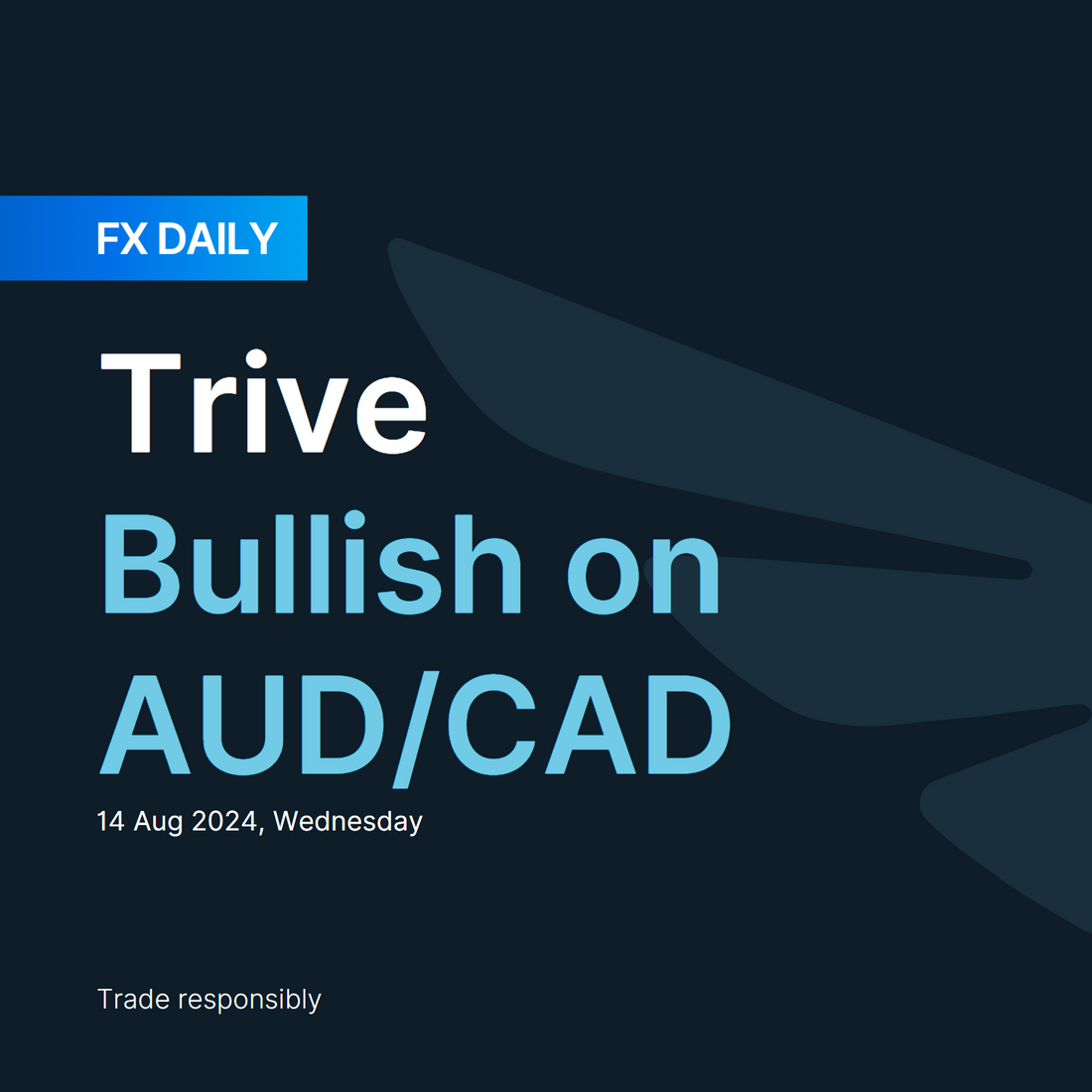FX Daily: Trive Bullish on AUD/CAD

The RBA maintained its current rate while delivering a hawkish message, emphasizing that the future inflation outlook remains uncertain and signalling a willingness to raise rates further if inflation escalates. Additionally, the RBA pushed back against market expectations for a rate cut in December. The latest BoC minutes revealed that consumer spending in Canada remains weak, posing additional risks for 2025 and 2026. Simultaneously, the most recent employment data indicates further cooling in the labour market. Combined with slowing consumer spending, it is becoming increasingly evident that Canada's economy is trending downward, putting further pressure on the CAD.
AUD: Hawkish RBA
In the last trading week, the AUD remained under pressure due to global risk aversion, driven by escalating tensions in the Middle East, slower-than-expected Q2 GDP growth in China, and fears of a potential US recession. However, the AUD regained strength later in the week, bolstered by hawkish rhetoric from Governor Bullock during the August RBA meeting.
Governor Bullock highlighted the ongoing uncertainty surrounding Australia's inflation outlook, noting that inflation remains sticky. The RBA Board considered a rate hike during the August meeting, and a rate cut was explicitly ruled out. Later, Bullock reinforced her hawkish stance, indicating that the inflation target range is unlikely to be met until the end of 2025. She emphasized the RBA’s vigilance on inflation risks and readiness to raise rates again if necessary. Bullock also warned that markets are prematurely pricing in rate cuts, with expectations for the first cut in December.
Given this context, the RBA could be the only G10 central bank maintaining higher rates for longer, with the potential for additional hikes if inflation becomes more problematic. Coupled with the recent hawkish rhetoric from the RBA, the AUD may continue to strengthen in the near term, barring any significant negative developments from China or the Middle East.

Currency Strength Between AUD & CAD
CAD: Dovish BoC and weak economy growth
In the context of Canada's economic landscape, the BoC implemented a second rate cut at its July meeting, lowering the overnight rate from 4.75% to 4.50%. BoC Governor Macklem indicated that further rate cuts are possible if inflation continues to ease in line with the BoC's forecast, but emphasized that future decisions will depend on incoming data, particularly in the shelter and services inflation categories, which are closely monitored by the BoC.
Adding to the economic concerns, Canada’s July S&P Global Manufacturing PMI fell to 47.8 from 49.3, indicating ongoing pressures on economic growth, especially within the manufacturing sector. The declining confidence among manufacturers could lead to more cautious behavior in investment and spending, potentially weighing further on Canada’s economy. The latest BoC minutes revealed that consumer spending is also slowing down, posing additional risks for 2025 and 2026. Many Canadians are hoping for rate cuts to ease mortgage interest costs, but as rates remain elevated, those renewing fixed-rate mortgages in 2024 will face significantly higher rates, reducing their purchasing power.
The latest Canada July employment report further signals a cooling labor market, with employment change coming in at -2.8k from -1.4k, while the unemployment rate remains at 6.4%. Combined with the slowing consumer spending, it is increasingly clear that Canada's economy is trending downward. The market is currently pricing in a 90% chance of a 25 bps rate cut by the Bank of Canada on September 4, with a 10% probability of a 50 bps cut. These developments are likely to put significant pressure on the CAD in the near term.

AUD/CAD 4H

AUD/CAD Current Retail Sentiment
Disclaimer
This material is provided for informational purposes only and does not constitute financial, investment, or other advice. The opinions expressed in this material are those of the author and do not necessarily reflect the views of Trive International. No opinion contained in this material constitutes a recommendation by Trive International or its author regarding any particular investment, transaction, or investment strategy. This material should not be relied upon in making any investment decision.
The information provided does not consider the individual investment objectives, financial situation, or needs of any specific investor. Investors should seek independent financial advice tailored to their individual circumstances before making any investment decisions. Trive International shall not be liable for any loss, damage, or injury arising directly or indirectly from the use of this information or from any action or decision taken as a result of using this material.
Trive International may or may not have a financial interest in the companies or securities mentioned. The value of investments may fluctuate, and investors may not get back the amount they originally invested. Past performance is not indicative of future results.
For more information about Trive International, please visit http://trive.com/int
Additional Information
Investing involves risk, including the potential loss of principal. Diversification and asset allocation strategies do not ensure a profit or guarantee against loss. The content in this material is subject to change without notice and may become outdated or inaccurate over time. Trive International does not undertake any obligation to update the information in this material.
By accessing this material, you acknowledge and agree to the terms of this disclaimer. If you do not agree with these terms, please refrain from using this information.
कोई टिप्पणी नहीं
Home
Trive
TriveHub





0 टिप्पणियाँ